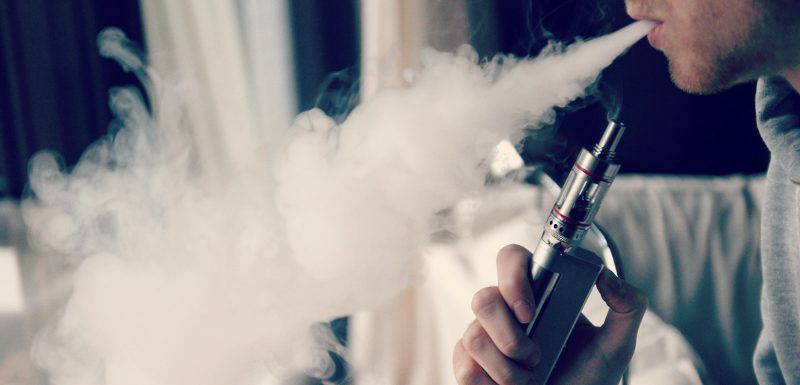As more and more people in the UK and all over the world switch from tobacco to vaping, scare stories about just what goes into an eliquid are on the rise. Some people claim it’s full of poison that’ll rot your lungs, other claim it’s industrial byproducts with some strawberry flavourings.
The reality isn’t as scary, as dangerous, or as ridiculous.
We inviteδ the team from UK eliquid manufacturer Kik to explain what’s in a bottle of vape juice.
Let’s Talk Ingredients
To put you in the right mindset about what goes into products that you consume, we’ll start by looking at some of the ingredients for a few popular products you might find in your home. Let’s see if you can guess what they are.
Product One
- Niacin (B3)
- Agents E450, E500
- Sodium chloride
- Calcium propionate
Product Two
- Lactose
- Demineralised whey
- Galacto-oligosaccharides
- Arachidonic acid-rich oil
- L-histidine
They sound terrifying! What is this? Bleach? Rat poison? Antifreeze?
No. Product one is from a packet of supermarket crumpets. Product two is baby formula.
See, that’s the thing about modern manufacturing. Everything’s got a scary name. But it’s still all food-safe. Product two is so food safe that it’s designed for premature babies!
Now let’s look at the ingredients on that bottle of eliquid.
- Propylene Glycol (PG)
- Vegetable Glycerine (VG)
- Flavourings
- Nicotine
Yeah, they sound strange too. But so does calcium propionate, and that’s in crumpets. So let’s break down what they are.
Propylene Glycol
PG sounds like something you’d use to fuel a fighter jet. It’s actually a syrupy food additive that you’ll find in ice cream, cake, milkshake and popcorn. It’s what gives a vape its mouthfeel and texture.
PG can be dangerous – if you eat 200g of it every day for a week. That’s the amount you’d get in a pint of eliquid. And eliquid is sold in 10ml bottles.
Vegetable Glycerine
VG produces the huge clouds you see from mod and sub-ohm eliquids. It’s made by purifying coconut, vegetable or soybean oil – three substances which you’ll notice aren’t made from petrol or poisons.
VG is non-toxic, hypo-allergenic, non-teratogenic and easily metabolized into water and carbon dioxide. It’s not scary at all.
Flavourings
Ever eaten a strawberry flavour sweet from a supermarket or a sweet shop? Well, that’s the standard of flavouring that eliquid manufacturers have to use. If a flavouring is safe to give to a kid who’s buying some gummy sweets, it’s safe enough for a strawberry eliquid.
Nicotine
This is the only dangerous ingredient on the list. Nicotine is addictive, in large enough doses it’s poisonous, and it’s worth mentioning a second time that it is addictive!
Concentrated liquid nicotine can be harmful, which is why manufacturers have to be careful about storing it, about using it, and about the dosages in each bottle. But even so, if you drank a bottle of a high strength eliquid, you could be in serious trouble. Especially if you can’t be sure of the dosage.
Making Sure – How Kik Make Eliquids
Of course, responsible manufacturers can be sure. In Kik’s Manchester lab, they follow a simple procedure that ensures quality.
Test, test and test again.
First, all of the ingredients are tested. Then they’re combined and tested. Finally, they’re bottled, and a set number of bottles are tested.
If the concentrations of ingredients, dosage of nicotine and quality of the flavour isn’t there, the liquid doesn’t get sold.
Honestly, that’s all there is to it.
So if you’re worried about the quality of the liquids you buy, look for three things:
- UK made liquids – these have to meet stringent standards, unlike those imported from places such as China
- Legitimate manufacturers – proper businesses, not someone selling unmarked bottles on the market
- Accurate dosages – if an ultra low liquid makes you light headed, maybe the dosage is wrong?
Keep an eye on those three things and you’ll be fine. After all, now you know what goes into an eliquid.

Leave a Reply